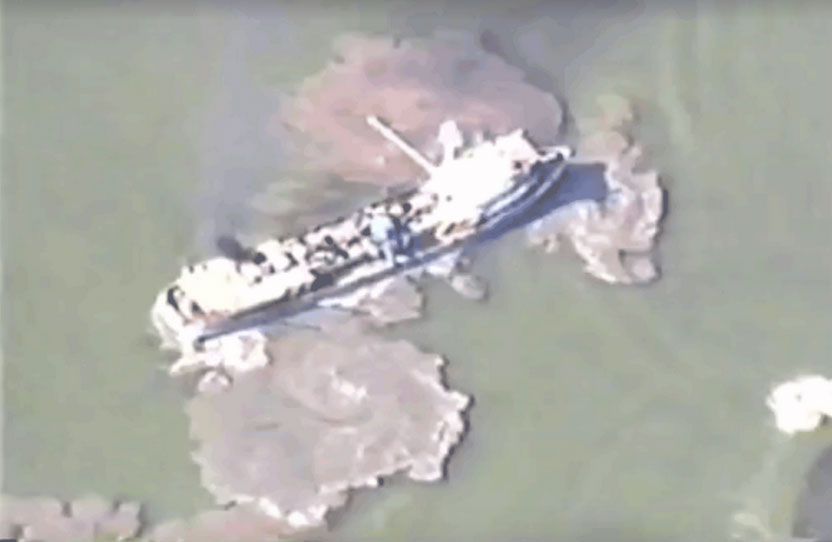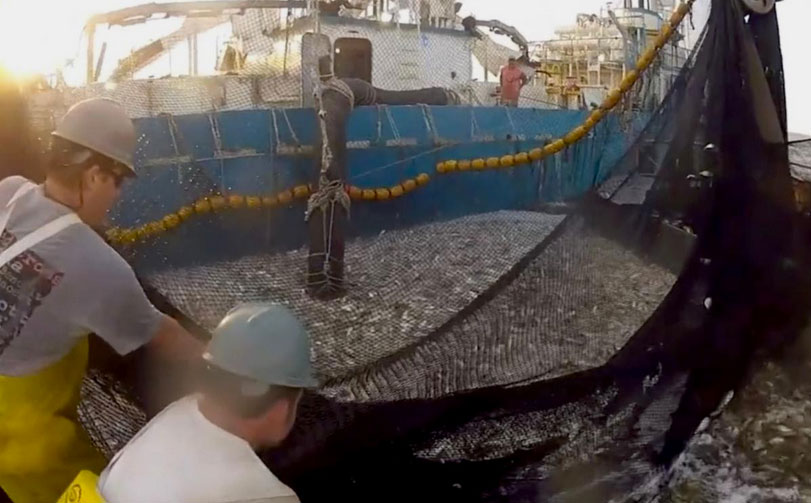
CCA says Louisiana is “the Wild West for Menhaden Industry”
Pogie boats continued to pound Louisiana’s beaches and shorelines this summer and Louisiana is still the “Wild West for the menhaden industry,” said David Cresson, Coastal Conservation Executive Director and CEO.
Cresson outlined concerns and yet another call for action around the lack of protection of Louisiana’s natural resources in a “Pogie Update” to CCA members and media Thursday, August 18.
“The only possible conclusion is that the industry just doesn’t care,” Cresson said.
“All summer long, massive pogie ships have been seen harvesting in the shallow waters off Louisiana’s beaches and shorelines. Sometimes, the boats have been spotted making sets, using their giant purse seines, inside the shallow bays and inlets off of Plaquemines and St. Bernard Parishes, churning up bottom sediment and netting millions of pounds of critical forage and bycatch. Not surprisingly, there are countless reports of dead redfish and other species left behind.
“Daybrook Fisheries (Empire) and Omega Protein (Abbeville and Moss Point, MS) remove nearly 1 billion pounds of menhaden and tens of millions of pounds of bycatch from Louisiana’s shorelines each year. Earlier this week, multiple menhaden vessels were observed operating within ¼-mile of the coast. Sadly, this was not a surprise, as it has been a common occurrence along our coast in recent years,” Cresson said.
“Remember that the Louisiana Wildlife and Fisheries Commission thought a ¼-mile buffer (excluding Breton Sound, which apparently is not important enough to protect at all) was an adequate step to address the problems those boats are causing.” he said. “The industry promised, in formal testimony, to adhere strictly to the buffers established coastwide. But, even though the buffer is grossly inadequate, the menhaden industry refuses to abide by it.
“I spoke recently to a charter captain from Plaquemines Parish who told me that he’s never seen the boats as close to shore as they have been this year,” Cresson went on to say. “They’re closer than ever this year, setting in places where the water is 5-6 feet deep,” he said. “Nothing can survive what happens when these boats set their nets. All that’s left when they leave is muddy water and dead fish. I have received similar calls from many others.
“Yesterday morning, Capt. Travis Lovell of Dularge reported seeing Omega ships ‘running right over’ the Pickets Artificial Reef, in 6 to 7 feet of water. Remember, these pogie steamers draft between 6-12 feet of water. They likely damaged the reef habitat that CCA, LDWF, and our partners spent millions to build a few years ago…a reef that provides a home for speckled trout, redfish, oysters, and various marine species and has become an extremely popular spot for recreational anglers.”
When the menhaden industry says they “go where the fish are,” they ap-parently mean what they say, without regard for the damage they might inflict, Cresson added. Aerial footage shows the damage being done to the sea floor by enormous menhaden steamers as they corral schools of menhaden into their purse seines.This is a common occurrence in Louisiana’s territorial waters.”
Mississippi enacted a full 1-mile buffer across their entire coast where pogie harvest is restricted. Advocates in Virginia are working to remove the harvesters from state waters, where they have caused enormous damage to local fisheries.
“Meanwhile, despite overwhelming support from the public, the Louisiana House of Representatives and the Senate, political roadblocks have stalled meaningful pieces of legislation aimed at reasonable regulation in Louisiana waters,” Cresson said. “Thanks to Rep. Joe Orgeron and many others, the actions of these companies and how they operate in Louisiana waters are being brought out of the shadows and into the light. But real change in Louisiana has proven hard to come by.”

pogies from fisheries along the Louisiana coast almost every day. (Photo courtesy CCA)
Cresson sited a report out of Virginia where, “Omega admitted to killing and releasing roughly 6 tons of redfish (about 12,000 pounds) in a single netful a few weeks ago”, leading to a dead fish spill that closed a state park. “One wonders how (or if) the incident in Virginia would have been reported had it not occurred near a state park and caused the closure of a crowded beach.
“The most recent data shows that more than 70% of the entire Gulf of Mexico menhaden harvest occurs within 3 miles of the Louisiana coast. (up from 54% in 1998.),” Cresson said. “As much as 300-400 million pounds comes from Breton and Chandeleur Sounds alone. Historical bycatch studies performed by on-boat “observers” admit they have trouble estimating what is being harvested and don’t count any dead fish left in the water. Are we to believe that concentrating effort close to shore, with known limitations of bycatch observations, that there is no reason to investigate the trend of increased pressure within Louisiana territorial waters?
“The real issue is our lack of understanding of how taking about a billion pounds of forage from Louisiana’s waters impacts other fish and wildlife species, and how this style of harvest might impact our fragile habitats.”
Cresson said sportsmen can help by continuing to send photos, videos and e-mails when you they see these activities near Louisiana’s shorelines and beaches, or when they encounter fish kills. CCA and the Gulf Menhaden Coalition will continue their commitment “to righting this wrong and pursuing reasonable solutions to this problem”, he said.
You can contact CCA Louisiana at 225-952-9200 or send email to david@ccalouisiana.com.


